The Beginning and End of Beirut’s Iconic Grain Silos
If architecture often deals with the physicality of form and space, at such moments of crisis and recovery, it is the presence of what remains that is most powerful.
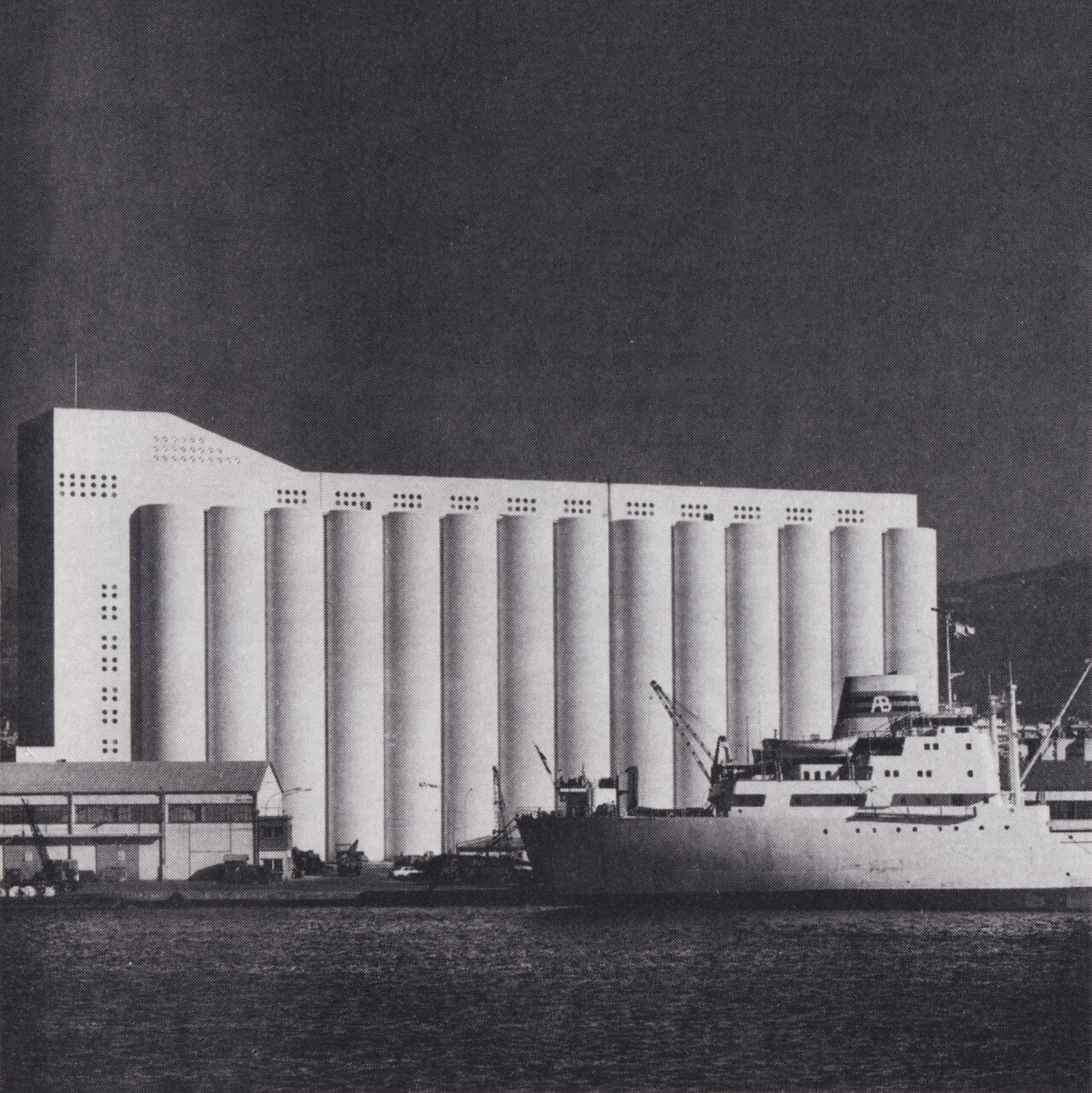
Image adapted from the monograph of Průmstav Pardubice. (Source: Jiří Hemr, Průmstav Pardubice 1951–1986, Pardubice 1986)
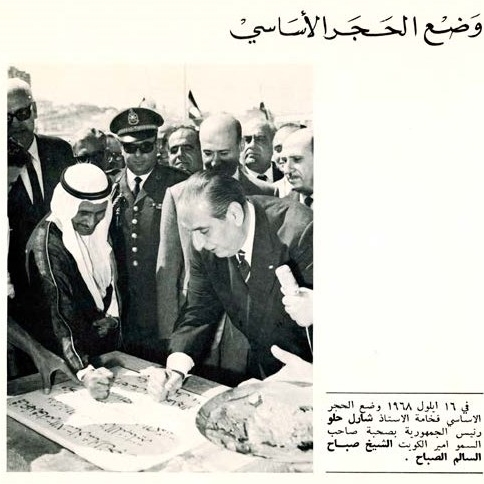
President of Lebanon Charles Helou and Emir of Kuwait Sheikh Sabah Al-Salem Al-Sabah participate in the foundation stone-laying ceremony of the grain silos at the Port of Beirut on September 16, 1968. The Kuwait Fund for Arab Economic Development funded the construction of the silos, which were ideated by the famous Palestinian founder of Intra Bank, Yousef Beidas. (Image source: Beirut Port Brochure, 1970)
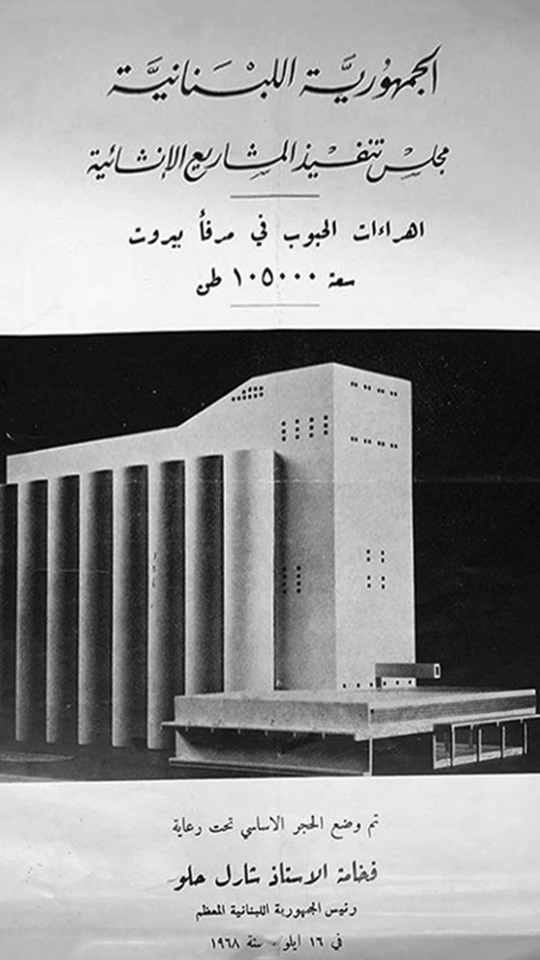
Managed by the Lebanese government's Conseil Exécutif des Grands Projets, construction started on September 16, 1968 and was completed by the end of 1970. The silos were originally designed to hold 105,000 tons of grain. Renovations in 1997 would add six cylinders, increasing capacity to 120,000 tons. (Image source: Beirut Port Brochure, 1970)
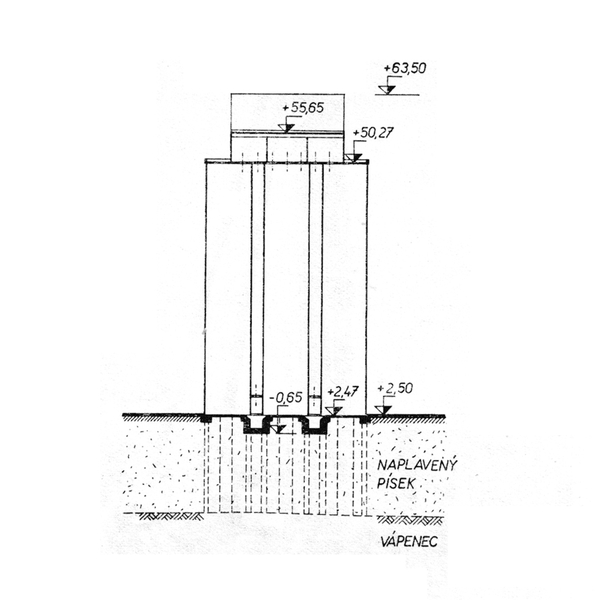
Illustrated cross-section of the reinforced cylinders. Remarkably, the design did away with the typical hoppers used for grain emptying — saving time, labor, and material. Instead, the grain was emptied through holes in the floor onto horizontal conveyor belts located in two longitudinal collecting channels. The rest of the grain in the silos was thrown by hand. (Image source: Karel Kerhart, "Stavba obilního sila v Bejrútu," Inženýrské Stavby 3, 1971, p. 113)
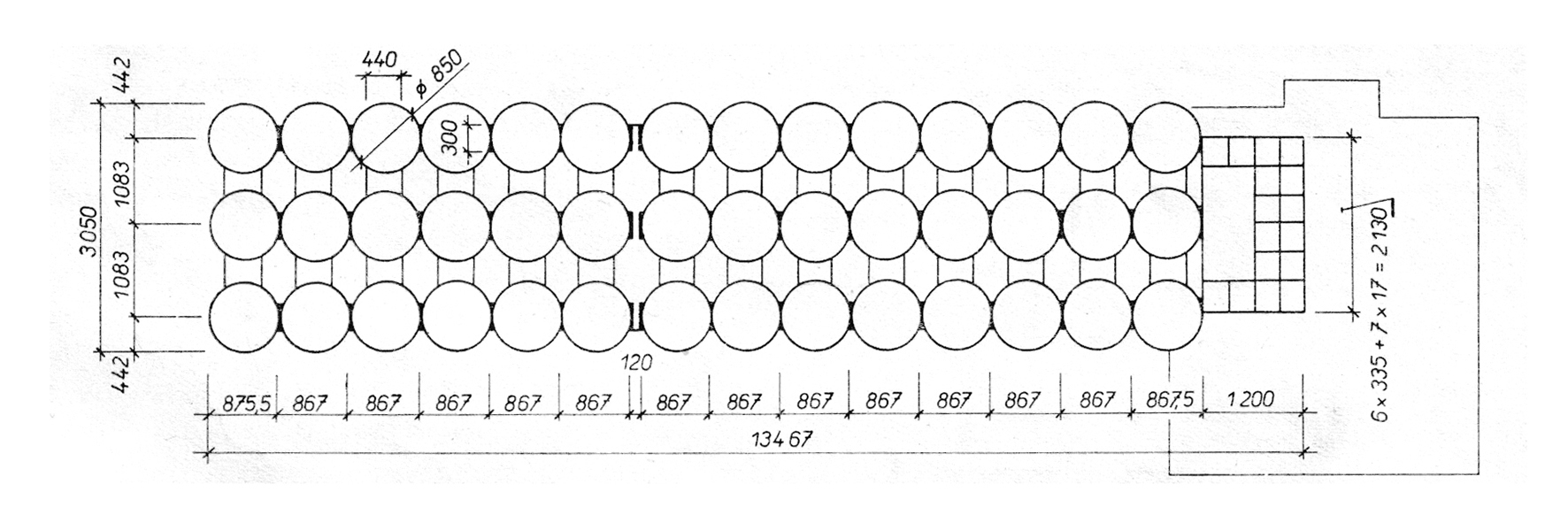
The original design consisted of 42 cylindrical silos with a capacity of 2,500 tons of grain per cylinder, for a total of 105,000 tons. Located on the pier of the port, between two basins, its construction faced challenging geotechnical conditions. (Image source: Karel Kerhart, "Stavba obilního sila v Bejrútu," Inženýrské Stavby 3, 1971, p. 113)
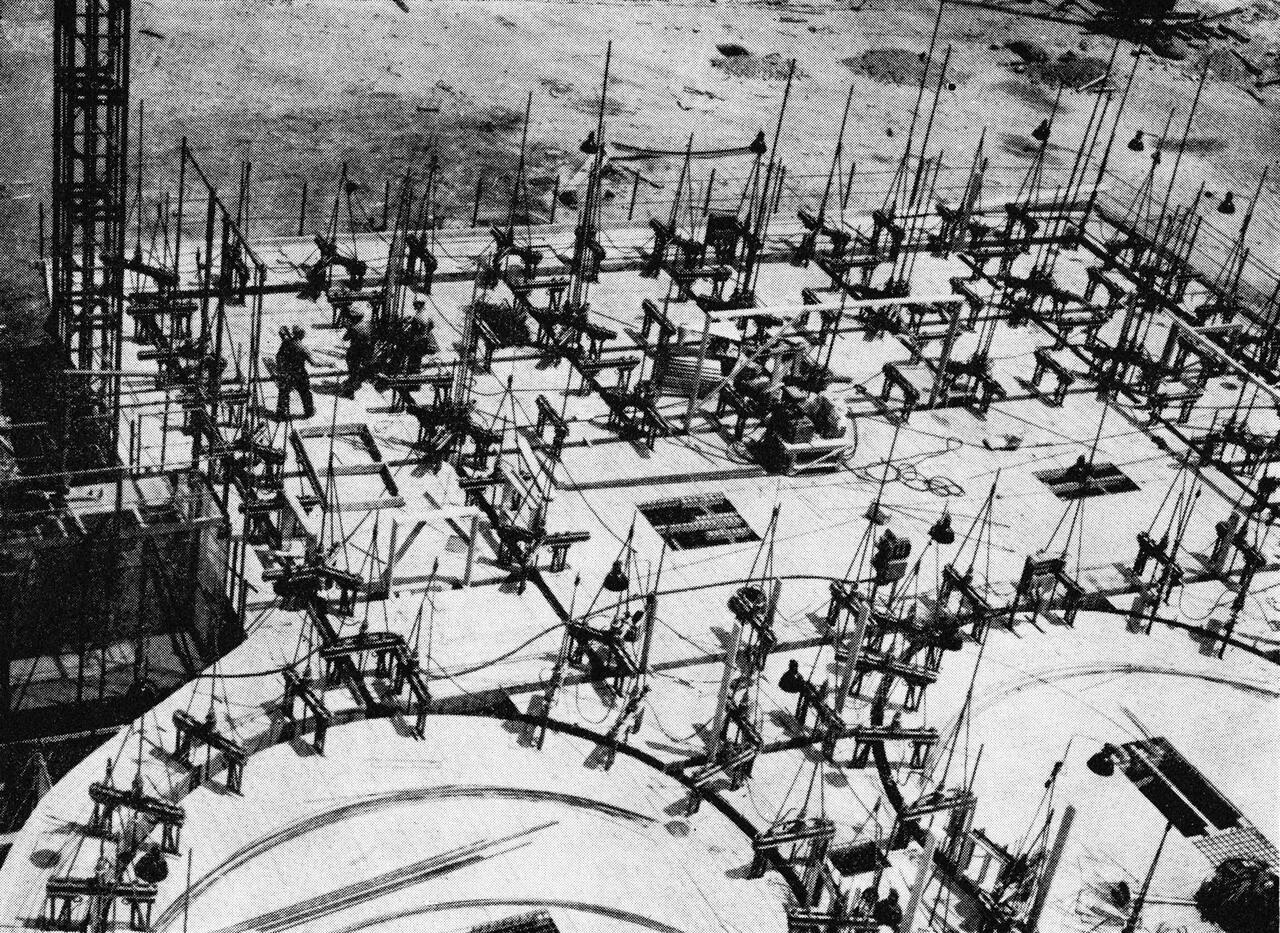
Blending in with the machinery, workers install the slipform of the engine room. Executed in four phases, construction of the silos was exacting work, with workers sometimes forced to remain on site for an uninterrupted 30 hours before being allowed to rest. (Image Source: Karel Kerhart, "Stavba obilního sila v Bejrútu," Inženýrské Stavby 3, 1971, p. 117)
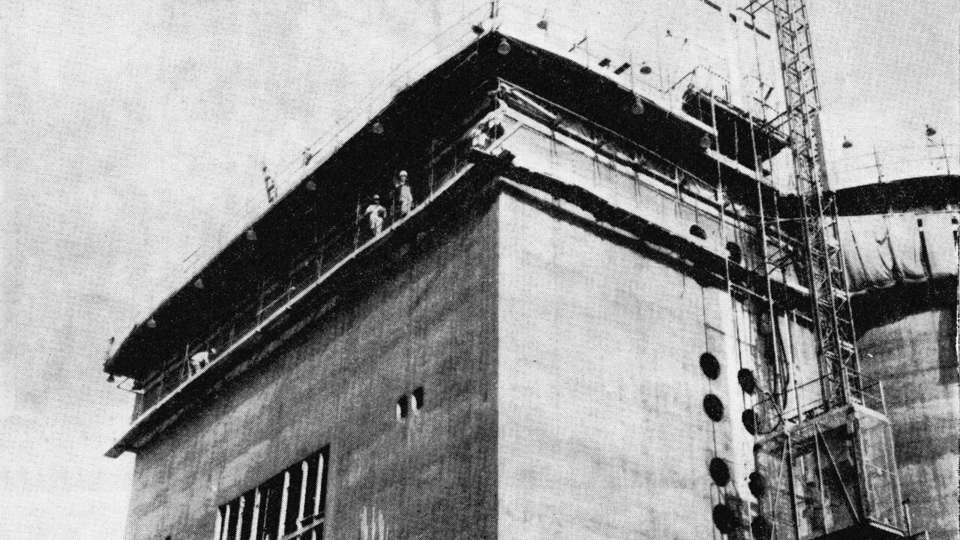
Workers perform surface treatment of the engine room walls from a suspended footbridge. The engine room, located on top of the silos, 61 meters above the surrounding terrain, rested on a reinforced concrete foundation slab (also placed on reinforced concrete piles) laid at a depth of 6 meters below sea level. (Image Source: Karel Kerhart, "Stavba obilního sila v Bejrútu," Inženýrské Stavby 3, 1971, p. 119)
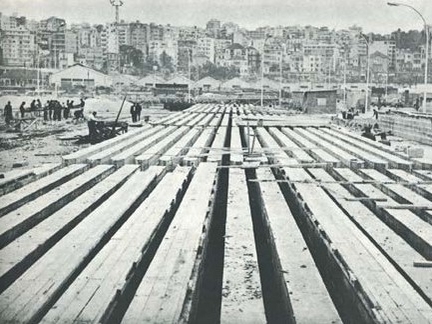
Workers engage in ramming of reinforced concrete piles, some up to 17 meters long. Almost 25,000 m3 of concrete was processed, and over 2,740 tons of reinforcing steel was consumed in the construction of the silos. The basic materials for the production of concrete were of local origin. As the only rock in the country, limestone gravel had relatively little strength and a large amount of dust. Fine sand was either from sea alluvium or crushed limestone. However, Portland cement of local production was of excellent quality. A specific prescribed type of cement, resistant to seawater’s effects, was supplied to produce the piles and the foundation concrete. (Image source: Beirut Port Brochure, 1970)
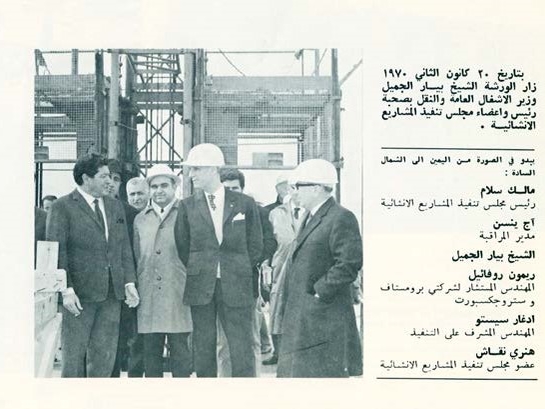
On January 20, 1970, Pierre Gemayyel, founder of the Kataeb Party and then-Minister of Public Works and Transport, visits the silos’ construction site. (Image source: Beirut Port Brochure, 1970)
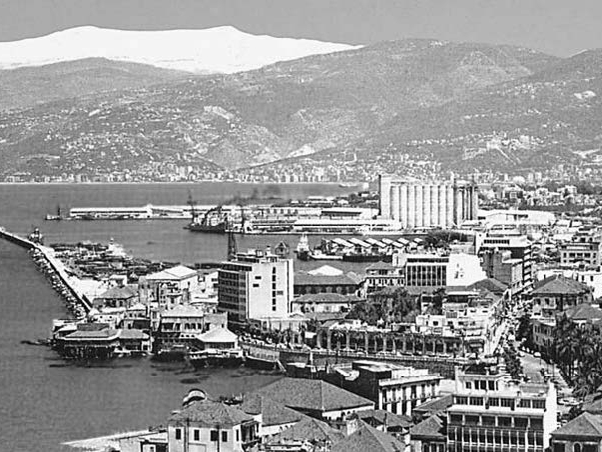
Pictured in the early 1970’s, the silos were a constant feature of Beirut’s shoreline for 5o years, having survived several missile attacks during the war. Regularly maintained, they were well-preserved. (Image source: Samir Kassir, Beirut, University of California Press, 2010, p. 361)
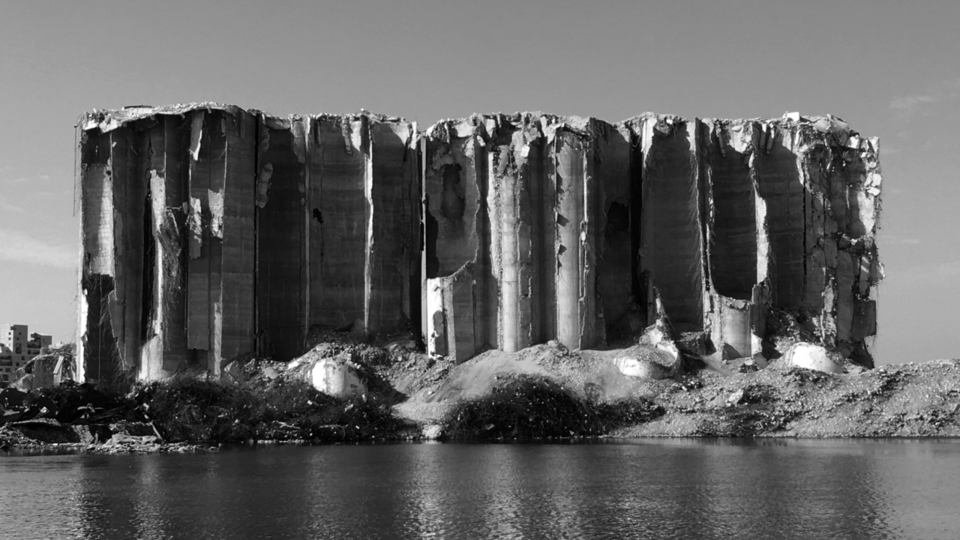
On August 4, 2020, a massive explosion of ammonium nitrate at the port of Beirut shook the city, killing 259 people to date, injuring more than 6,000, and badly damaging entire neighborhoods. Standing at the epicenter of the disaster, meters away from the warehouse where the detonation initiated, the grain silos took the brunt of the impact, effectively shielding the western part of the city from the blast. East-facing concrete cylinders collapsed on the spot; west-facing ones remained partially standing. (Photo courtesy of Emmanuel Durand, 2020)
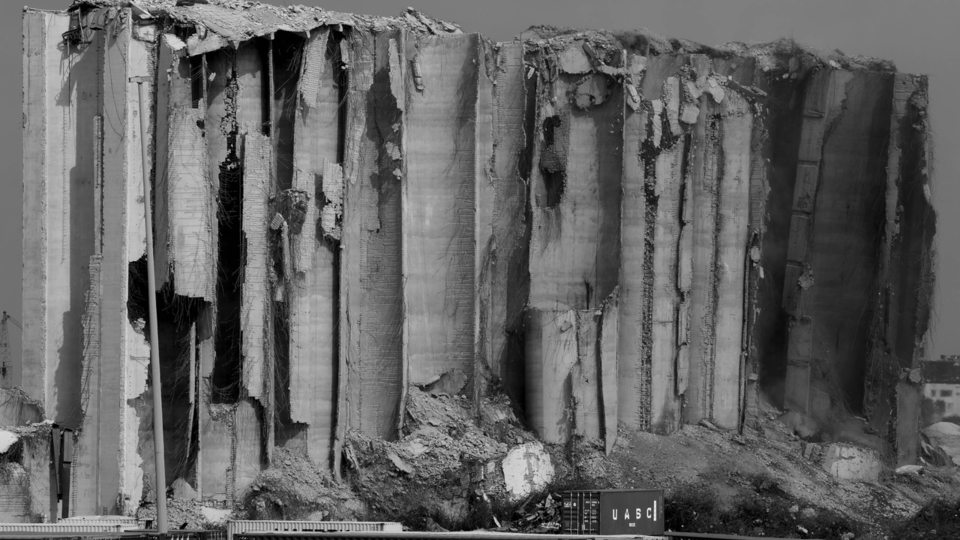
On July 31, 2022, after a weeks-long fire sparked by grain that had fermented and ignited in the summer heat, the northern block of the silos toppled. The structure and much of the port were enveloped in a huge cloud of dust that affected nearby residential areas. In April, the government had decided to demolish the silos — a decision it suspended following protests. Families of the August 4 blast’s victims, survivors, and activists are calling to preserve the remaining structure as a potential source of evidence for the judicial probe, as a memorial, and as a public asset. August 3, 2022. (Marwan Tahtah/The Public Source)
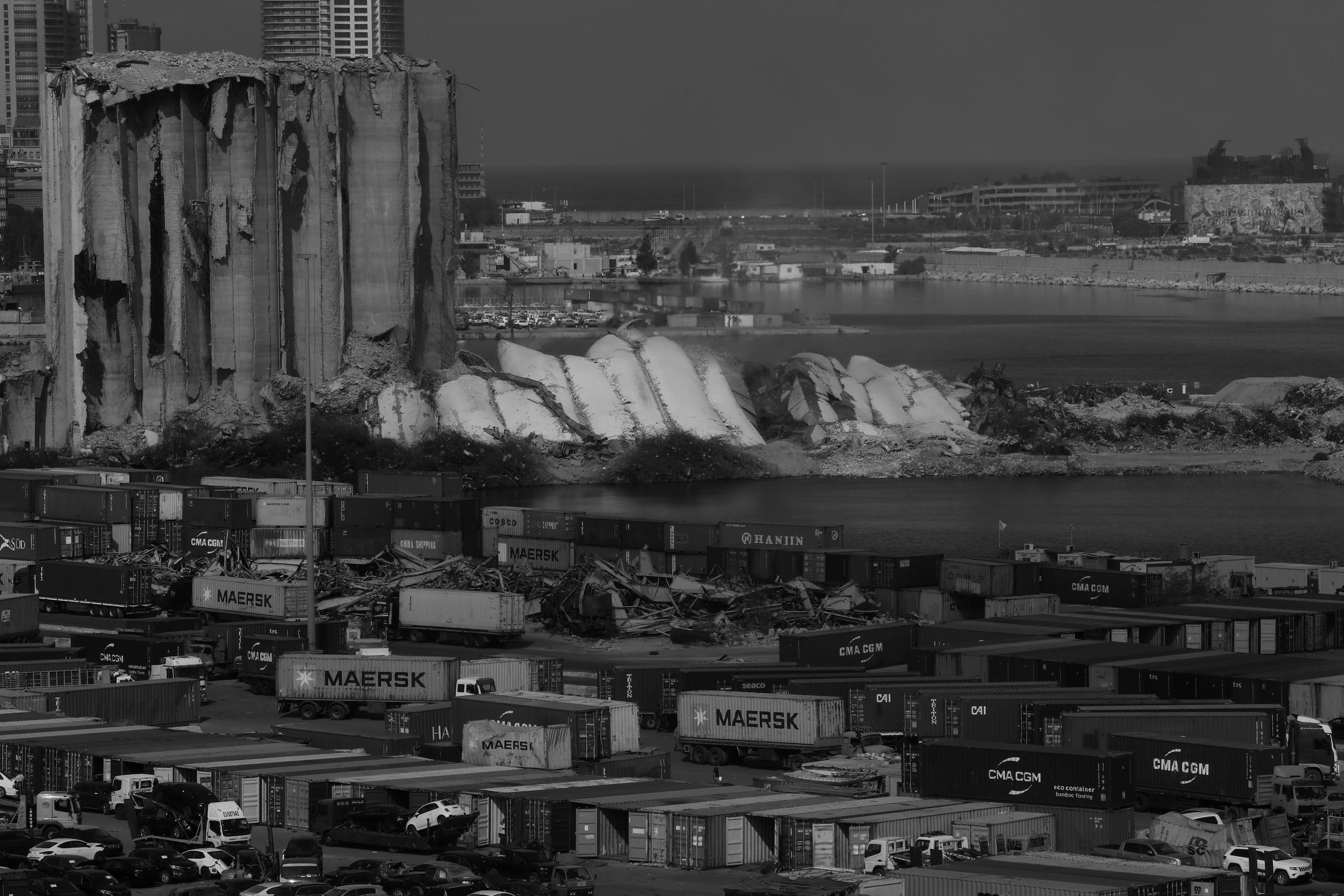
The northern section of the silos completely collapsed after a fire raged in the structure for more than six weeks. Activists and families of the victims accuse the authorities of deliberately causing its collapse. Our City Our Silos members are now fighting to preserve the southern part of the silos, saying: "Now that the argument of 'public safety' has disappeared with the demise of the northern silos, these same actors are concerned with immediate intervention to preserve the southern part." Beirut, Lebanon. August 23, 2022. (Marwan Tahtah/The Public Source)
A version of this essay originally appeared on April 3, 2021, in the journal Hidden Architecture.